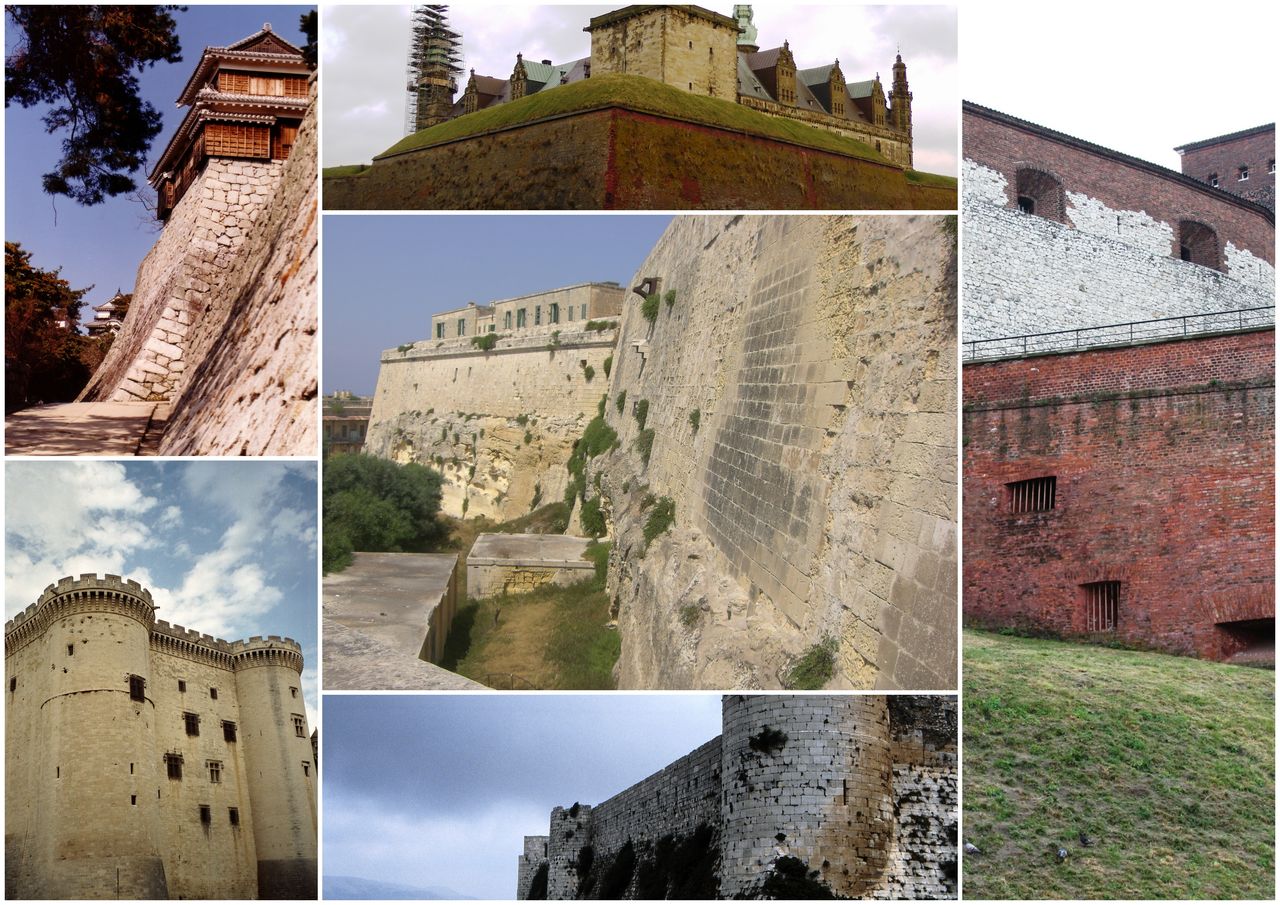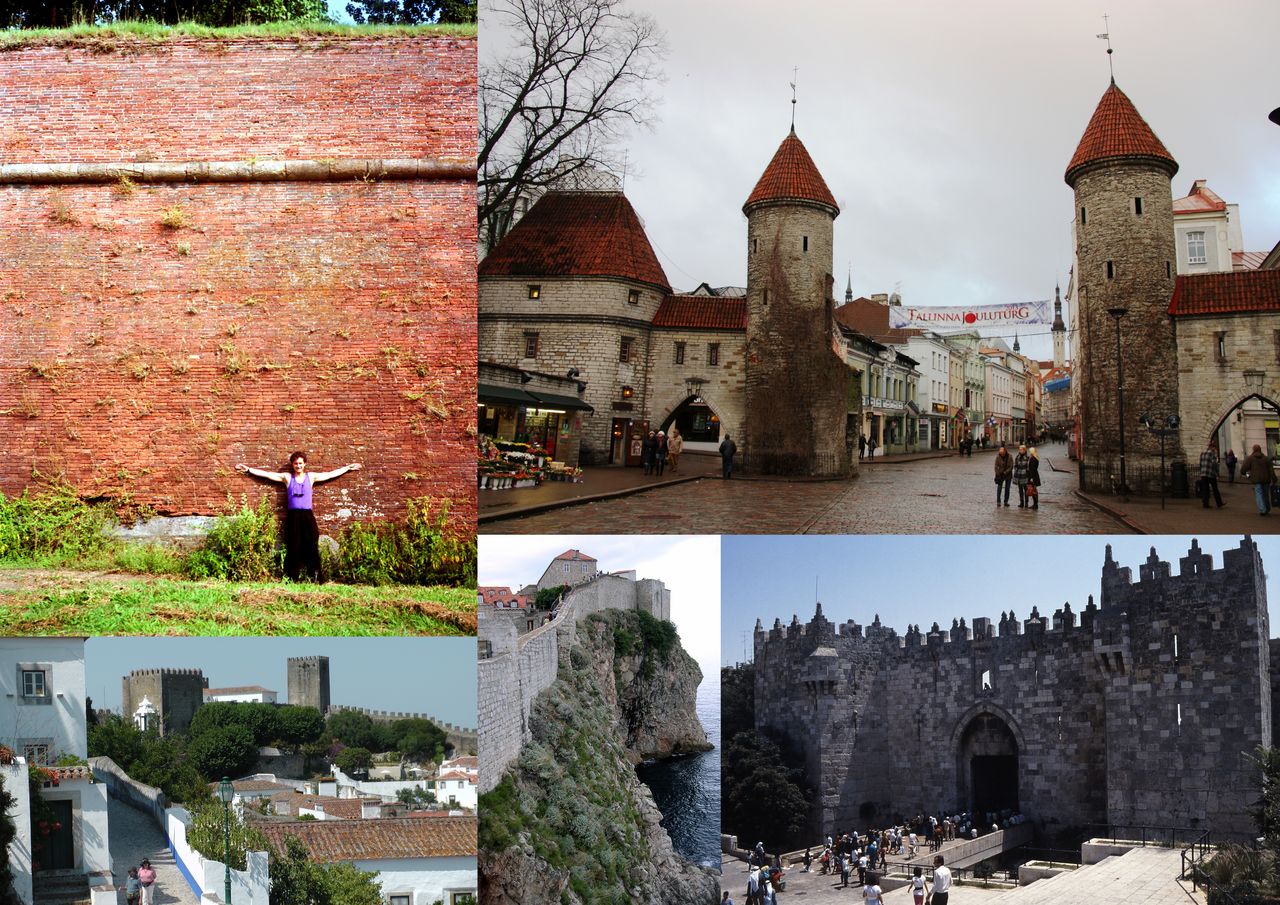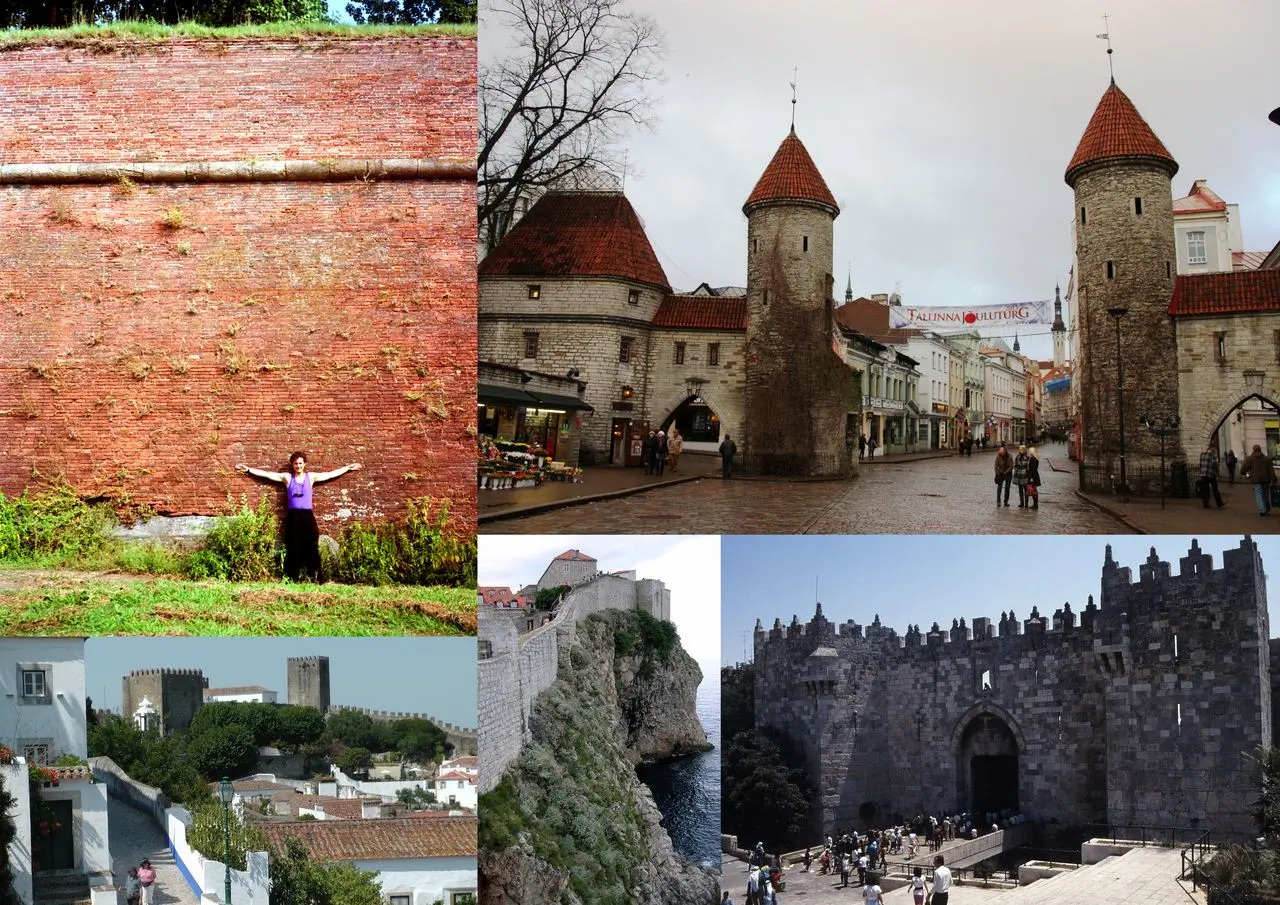Some defensive structures are basically walled military compounds on a limited area, like fortresses. Others include entire towns.
The fortresses
Throughout the world there are a number of forts, and some more famous than others. Prime examples are the Crusader castle Krak des Chevaliers in Syria and the Inca fortress Saqsayhuaman in Peru. These were largely citadels (fortresses, forts) and little else. Their aim was to protect a military contingent and possibly a king within heavy walls. At times there would be a natural or constructed moat. Also, these fortresses would often be positioned on hilltops in order to provide perspective and extra protection.
It is clear that some of these fortresses also had splendid palaces on the inside. An example is the Alhambra, one of the most impressive of all palaces/citadels/fortresses.
My travels and subsequent picture collection includes Alanya and Rumelihisari in Turkey; Aleppo and the Krak in Syria; Tangier in Morocco; Matsuyama in Japan; The Forbidden City in China.
There are also several fortresses in Europe with almost intact walls. They date back to the Middle Ages and later periods. To mention some: London Tower, Kronborg, Sintra, Le Barroux, Tarascon, Corte, Hvar, San Marino, Valletta (pictured above), Wavel, Kremlin, Alhambra, Salzburg, Würsburg, Wernigerode, Gibraltar.
A large number of them are on UNESCO’s World Heritage List.
Check out the pictures tagged “fortress”, included at the end of this article. Here is a collage of some of them.

More fortresses
Military strategists often seek to take advantage of natural features like rivers and hills. Inside what is generally known simply as the Rock, we find one of the most striking fortifications in world history. I am talking about the large fortress on the southern tip of the Iberian Peninsula, Gibraltar.
The British have managed to secure their territory for centuries, much to the dislike of Spain. (Who holds its own provinces across the Strait, in Morocco.)
The development of firearms, heavy guns and more explicitly explosives has triggered new forms of military defence structures. They still build fortified compounds (forts). On the other hand, they have no ambition of keeping entire armies at arm’s length, only minor hostile intruders or attacks. There are recent examples in Afghanistan.
What has survived to this day is bunkers underground or inside mountains. I have had the pleasure of visiting the not very heavily fortified bunker underneath Whitehall, London.
Fortified city walls
Others built a walled militarily defended complex around the city itself. These would protect not only the royals and their courts, but also the civilian population. There are a number of towns in southern Europe with such systems. My favourites include the city wall of Lucca in Italy, as well as that of Dubrovnik in Croatia. In northern Europe, Tallinn the capital of Estonia, has managed to largely preserve its ancient stone wall.

Minefields
This is a kind of defensive structure of another kind. I have no pictures of a minefield, not even a recollection of visiting one, although I suspect I have crossed at least one mine field: I entered Israel across the Allenby Bridge from Jordan. In addition I visited the DMZ between North and South Korea after I published this article. This is most definitely a mine field.
Further reading
This is the second chapter about Defensive Structures of the World. The series:
(1) The huge ones: There are some historically significant and physically huge military structures around the world. They would protect entire countries against invading hostile forces.
(2) The smaller ones: Some defensive structures are basically walled military compounds on a limited area; fortresses. Others include entire towns.
(3) The protection of civilians: Some defensive structures are basically walled military compounds on a limited area, like fortresses. Other structures include entire towns.


